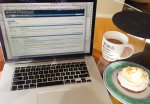Back in a previous century I used to favor a particular club that had either jazz or art rock bands. One of the artsy acts had 2 soundpersons, one who did most of the mixing and another who did EFX changes, blending and panning, and set return levels. The first time I heard them it was a night off for me and I didn't really pay much attention until it occurred to me that I was hearing the band, not intermission playback... And that made me walk over and observe the guys mixing. I asked some questions at break and they were very gracious to explain things to a relative n00b (I was one, really!). The FX guy in particular was a big help to me in understanding what was important in cover songs versus what was important to the band with their originals. Over 30 years later I still use his advice.
In one of the archived AVID Venue webinars Robert Scovill talks about using snapshot automation to replicate the index cards and occasional use of an assistant to deal with mix and EFX changes. A helper or co-mixer isn't without history. In the pre-automation era, motion picture mixing was done by many hands on very large consoles... often 80 - 100 inputs or more, even after reducing the orchestra tracks to stem mixes.
I do find Tom and Evan's bit of fun to be an amusing take on "nostalgia" at such tender ages....

And for a related topic swerve - we've seen a few comments over the years about what one of our "back in the day" rigs would sound like with modern processing. I have some old stuff stored in my mom's shed that I'll need to move soon. If I can make space in my garage I might have to begin some restoration. Unfortunately I sold my Ashly analog crossovers so I won't be able to make measured comparisons, but it might be fun to see what I can get out of what I didn't sell when I got out of the PA owning biz.
 ~:-D~:grin:
~:-D~:grin:
